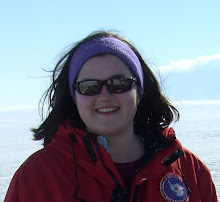As an aside to begin with: from the book jacket and a few interviews of the author I had seen, I gathered that the author is 29, a graduate of Brown University who currently resides in Brooklyn but who was raised in Cambridge, MA. Trying to avoid any stalker status, I resolved not to do any more Googling, although I did ask friends in the Brown class of 2002 if they knew him, but as they were all scientists and engineers (and rather introverted) I have yet to have any luck. So Mr. Larsen, if you stumble upon this blog, know that you have an admiring fan.
So to get the basic facts of the book out of the way: and lazily, using the NPR blurb:
The titular hero is a 12-year-old boy who maps everything, including faces, the dinner table and the geology of his home state of Montana. After seeing his work, the Smithsonian, not realizing the boy's age, invites him to be a keynote speaker at an important gala. His journey across the country on a train (hiding in a Winnebago being shipped) is a great adventure filled with wit, humor and fundamental truths about life and family. And unlike many other books' footnotes, which beg to be ignored, the maps and stories that occupy the book's marginalia are an extra treat that need to be devoured as part of the main feast.And now in a scattered fashion, I can comment on what I found noteworthy in this work, both good and bad.
The marginalia were delightful. I can always fall for a gimmick (none are as good as the few in Dave Egger's "A Heartbreaking Work of Staggering Genius"), but as employed here, like the tricks employed by Jonathan Safran Foer in "Extremely Loud and Incredibly Close", they make the work enjoyable, but are not enough to lift the work to greatness.
As a character study, I find the novel lacking, as no characters feel real, or sympathetic. As a reader, I simply didn't care what happened to them. Other reviews seem to imply the story is about the adventure - and thus plot driven - which renders the character development moot. But the characters are developed, indeed most of the book is spent developing them (primarily T.S. and his mother Dr. Clair) but they always seem to have traits that serve as literary device and so no character becomes an organic whole.
Larsen's treatment of science is quite refreshing and accurate. The puzzles of academia encountered by Dr. Clair and Dr. Yorn- the imagined travails of T.S.'s paternal great-great-grandmother whose tale, written by Dr. Clair, includes her being a member of the first class at Vassar who becomes a faculty member in geology, and who had a childhood run-in with Dr. Agassiz- all feel familiar to me- a female trying to make her way in academic science. I greatly appreciated the excerpted drawing of a prototype of an evolutionary tree from Darwin's notebook with the words "I think" written above it. T.S. and Larsen intelligently steer away from the difficulties of quantum mechanics which has derailed many a witty and insightful writer. Instead, he explores the less rigorous ideas of multiverses put forth by Hugh Everett (whose son Mark is the lead singer/songwriter of The Eels). On the other hand, there has been far too much media attention given to Paul Ekman's micro-expressions (although the Fox show "Lie to Me" was quite entertaining) and so it felt quite unoriginal for T.S. to be making Ekman-like facial maps.
Distracting me throughout the entire work, was the question, "Where along the Asperger's/autism spectrum does T.S. lie?" It no longer feels possible to have quirky, anti-social characters in literature; as a reader I am constantly playing psychologist and trying to offer a diagnosis. And even worse, this echoes too strongly of "The Curious Incident of the Dog in the Night-time", a book that did not impress me.
Finally, the biggest point of discussion "The Selected Works of T.S. Spivet" brings up regards the childhood computer game, Oregon Trail. In a margin, T.S. discusses playing it with his deceased brother Layton, saying
... if you spent all of your money on oxen in Independence, Missouri, at the beginning of the game -forsaking food, clothing and ammunition to build an armada of yoked cattle 160 strong - that the game would not provide any maximum speed for your wagon, but rather continue to increase your pace by 6 MPH for each oxen. Thus, you could finish the game in two days, by travelling what I figured out to be approximately 960 MPH. Naked, hungry, and unarmed, you still blasted across this continent before the cholera could catch up with you. That first time we we won the game this way we both stared at the screen, dumbstruck, trying to make room in our mental maps for a world that could include such a loophole. Then Layton said, "That game kinda sucks now."And though this would be endearing and delightfully nostalgic, it seems to be utter hogwash. No one I know who has played Oregon Trail from an Apple-II to a modern Windows machine has ever heard of such a cheat. Googling the point was for nought. This then detracts from all the well-researched and whimsical facts scattered throughout the book by Larsen. Can any of it be believed?

No comments:
Post a Comment